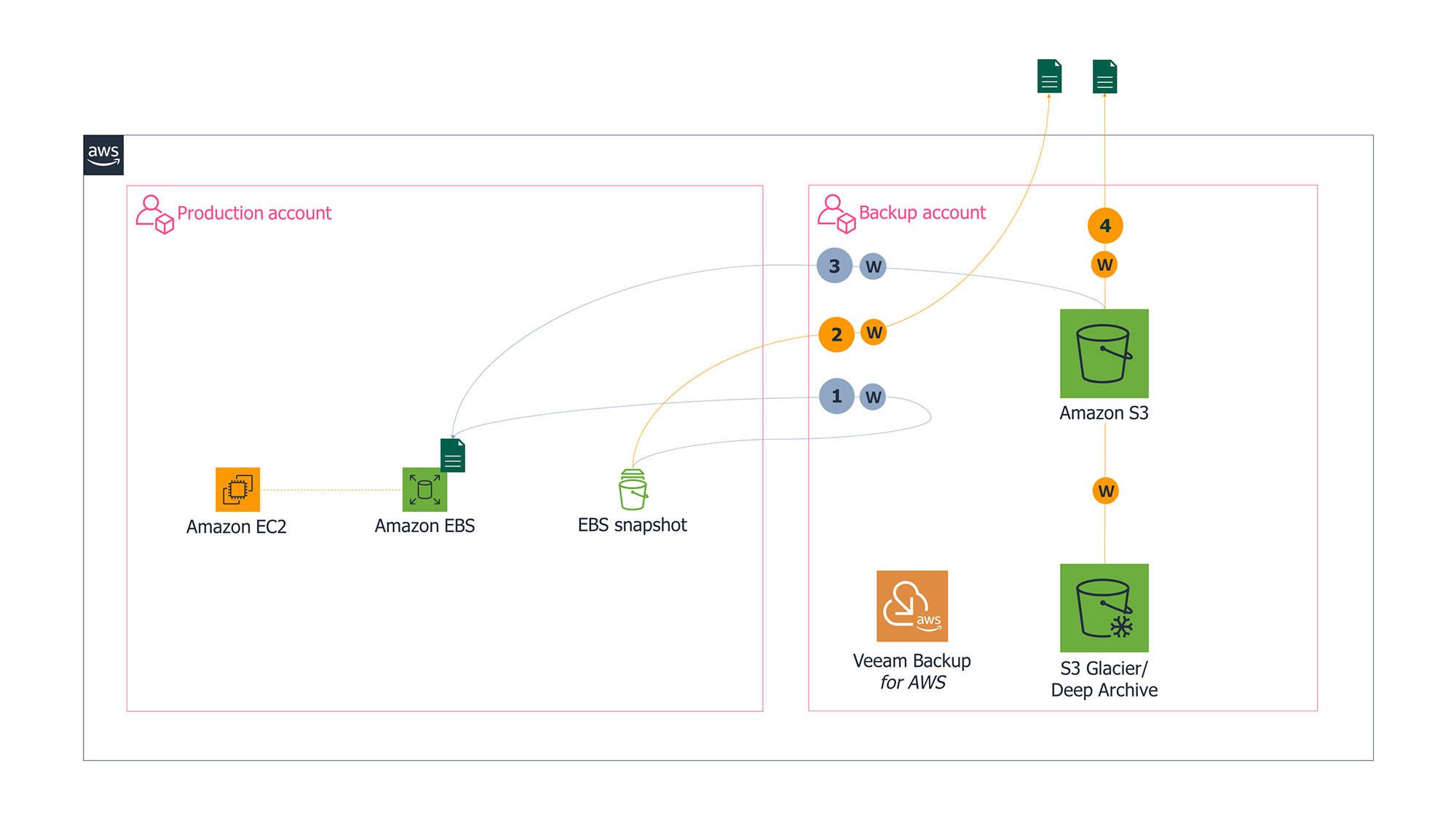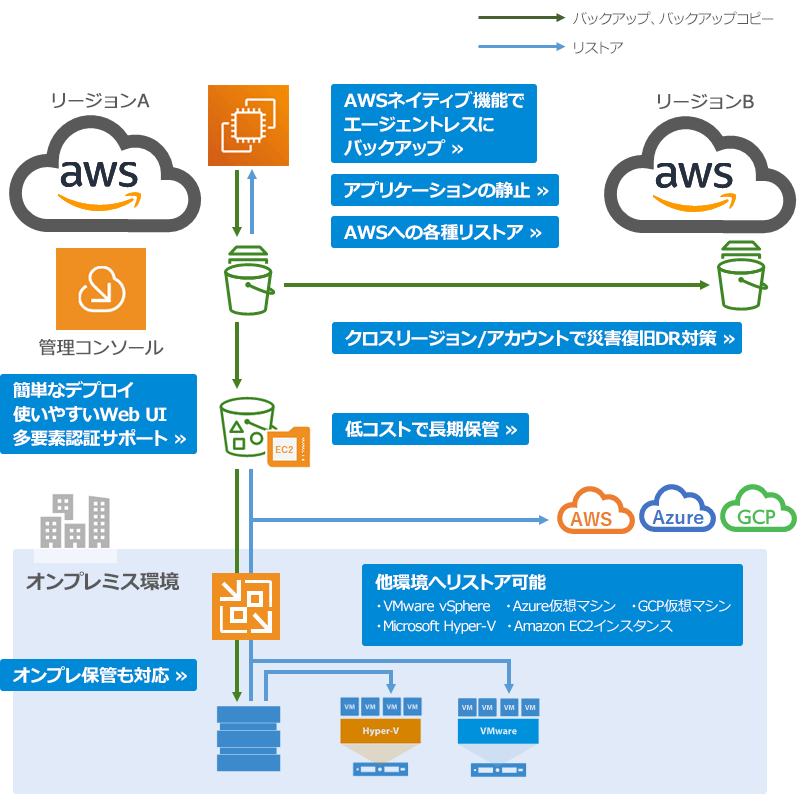

By doing this, the EBS volume will be persistent and preserve the installed Veeam application and database even if the EC2 instance is errantly powered off. I assigned a general purpose SSD as the boot EBS volume for the Windows OS (100GB). For my testing I used a T2.Large EC2 instance which has 2vcpu and 8GB RAM. Keep in mind that Veeam licensing is based on CPUs of machines you are backing up from, and allows for unlimited proxy transport servers with no additional licensing fees.
#VEEAM BACKUP TO AWS FULL#
LIC file imported to give full VB&R functionality to the proxy VM.
#VEEAM BACKUP TO AWS SOFTWARE#
vib files and a running proxy, we then call into action an EC2 virtual machine, running Windows, with the Veeam B&R software installed and the. To solve the problem of proximity, native access to the. You don't want this process to run "over the wire" remotely and it won't work very efficiently with object storage. To do this, there needs to be a Veeam Backup proxy which has access to the. The Veeam Backup copy job process is a forward-incremental forever backup, which then requires the periodic copy job "merge" to be performed to combine the oldest incremental copy job into the running synthetic full image. The difference, however, is in performance and ease of data manipulation.

Thus 10TB of EBS (st1) storage would be $450/mo, or $250 for (sc1) compared to $300/mo for S3.

Compared to S3 storage starting at 3 cents per Gb/month. The cost of EC2 EBS Cold HDD (sc1) is 2.5 cents per Gb/mo and Throughput Optimized HDD (st1) is 4.5 cents per Gb/mo. But why use EC2, which is more expensive, rather than S3? Two considerations: 1) Ease of Restore 2) Faster incremental merges. Using the Veeam Backup Copy Job process to write incremental backups to an Amazon EC2 instance is an inexpensive way to create offsite backups of your VMware or Hyper-V environment.


 0 kommentar(er)
0 kommentar(er)
